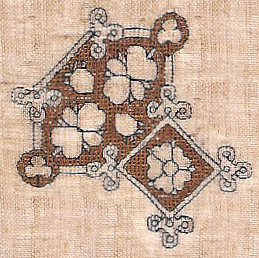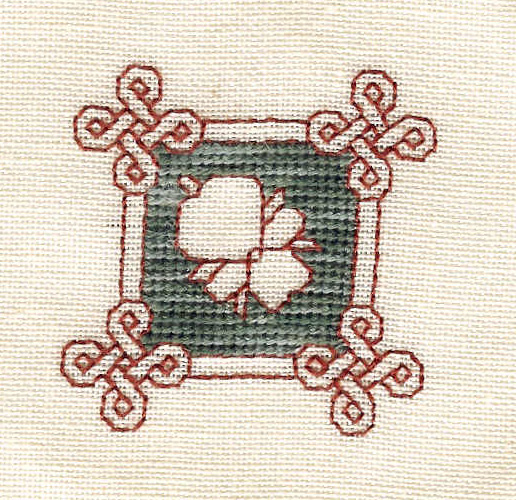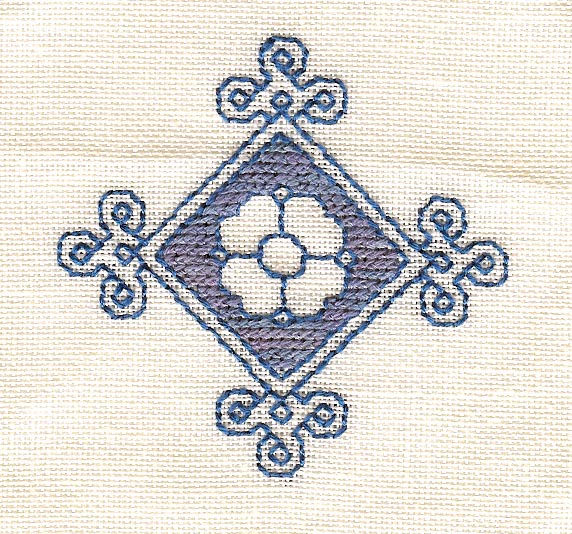Voided Work: An Introduction
Welcome to the wonderful world of Voided Work. Voided Work
is any embroidery where the design is left open and unworked and
the surrounding area is worked such as to create a "void".
Assisi embroidery is one such style of this work. The term Assisi
Embroidery comes from the Victorian time when there was a revival
of 13th and 14th C embroidery. That which was done in the Assisi
area became known as Assisi Embroidery. As part of this movement,
several areas of Italy also used specific tassel styles that became
common on the work of each area.
I have always been fascinated by the contrast of voided work.
Several years ago I read an article in our needleworkers guild
newsletter called Stalking the Wild Assisi. In this article, the author discusses her
journey of learning about Assisi work. Then a couple years later,
I took a class from Linn
Skinner on Voided Work. In this class, besides learning about the origins of voided work, we were given a number of patterns. One was an early 16th C.voided work rose, which I fell in love with, and is shown below. Slowly my eye began to see more and more voided work patterns. One that gave me a smile, was of a rabbit. I encountered a number of patterns of rabbits and the one in the project lesson is my recharting from an early 20th C piece.
A revised article from the West Kingdom Needleworkers Guild Newsletter -- an overview of the history of voided work. Included is a bibliography of books and articles.
Voided Work Rabbit Pincushion - a project lesson for introduction to Voided Work
Appendix of 16th & 17th
C. Examples - lists source, country of origin, time from,
pattern, stitches used, color & thread, banding & edging
patterns
On my further studies of voided work, I realized that we had very few historical patterns easily available to us. In fact, apart from the ones charted by Kathryn Goodwyn as part of her article, I could find none on the web and only a few in books. So here for your enjoyment is my journey of discover through voided work by charting some historic patterns. The first set in this project are from model books. I hope to do some from actual textiles shortly. Also coming shortly will be a listing of stitches used historically in voided work.
 |
The original (left) is part of a mid-17th C sampler - the original is in the Victoria & Albert Museum.
Below (left) is the Heartsease, needlework by Sabrina, chart
by Linn Skinner - done in long arm cross stitch and double running,
on 25 ct. Dublin linen, outlined in Soie Crystal silk and filled
with Gloriana overdyed silk limited edition. This piece was the
Pattern Page for Filum Summer 2002.
Below (right) is the Rose, needlework by Sabrina, chart by
Linn Skinner - done in long arm cross stitch and double running,
on 25 ct. Dublin linen, outlined in blue Madeira silk and filled
with Waterlilies Amethyst silk.
|
 |
 |


